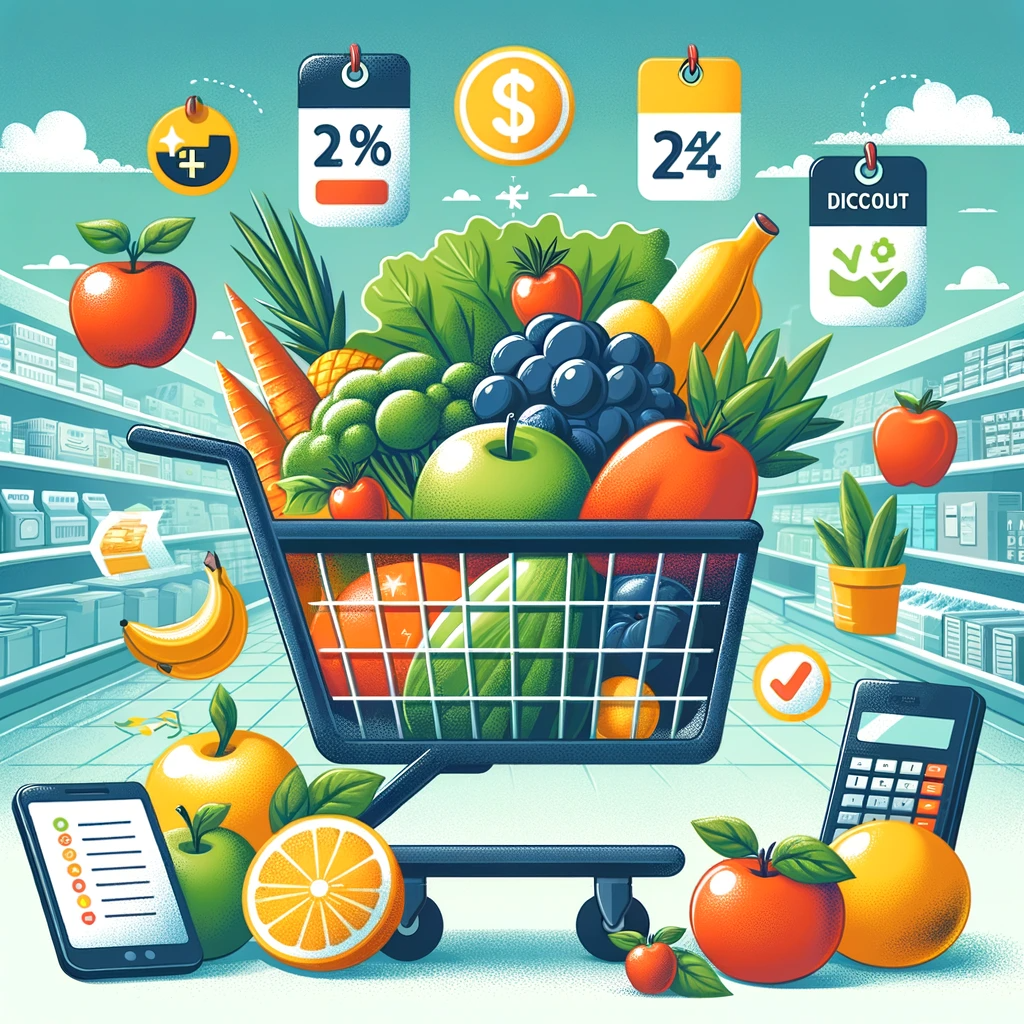Grocery shopping is a significant part of everyone’s budget, and finding ways to save on these expenses can make a big difference in your financial well-being. Whether you’re a student living on a tight budget, a busy parent looking to cut costs, or someone just trying to be more fiscally responsible, reducing your grocery bill is achievable. This article delves into various strategies to maximize your savings at the grocery store. From smart planning and budgeting to understanding sales cycles and using coupons effectively, these tips are designed to help every shopper, regardless of their budget size. So, let’s embark on this journey to smarter, more efficient grocery shopping that keeps your pantry full and your expenses in check.
For other ways save, check out our blog. OR, if you are looking for the best live deals online, check out our inventory of ongoing deals on our home page.
Planning and Budgeting
Effective grocery savings start with two key practices: planning and budgeting. Meal planning is the cornerstone of budget-friendly shopping. By planning your meals for the week, you can create a precise shopping list, ensuring you only buy what’s necessary. This strategy helps in avoiding impulse purchases, which often increase the grocery bill. Start by checking what you already have in your pantry and then plan your meals around these ingredients. This not only saves money but also minimizes waste.
Setting a budget is equally crucial. Determine how much you can afford to spend on groceries each week or month and stick to this limit. It’s helpful to track your spending for a few weeks to get a realistic idea of your average grocery expenses. Once you have a budget, divide it into categories like produce, dairy, and meat, which can help in making more cost-effective choices when shopping.
Additionally, shopping with a list prevents buying unnecessary items and helps resist the temptation of sales and promotions on products you don’t really need. Digital tools and apps can be helpful in both planning your meals and tracking your grocery budget.
Understanding Sales Cycles and Seasonal Produce
One of the most effective strategies for grocery savings is understanding and utilizing sales cycles and seasonal produce. Most grocery stores operate on a sales cycle, typically running every six to eight weeks. This means that certain items will reach their lowest prices at regular intervals. By tracking these cycles, you can learn the best times to stock up on specific items. Non-perishable goods or items with long shelf lives are ideal for bulk purchases during these sales.
Seasonal produce is another area where significant savings can be achieved. Fruits and vegetables that are in season not only cost less but are also at their peak in flavor and nutrition. Plan your meals around seasonal produce to take advantage of these lower prices. Additionally, consider buying extra to freeze or preserve, allowing you to enjoy these items when they’re out of season without paying premium prices.
Furthermore, be flexible with your shopping list. If you planned to buy a certain ingredient but find a similar item on sale, don’t hesitate to make the switch. This adaptability can lead to more savings without compromising the quality of your meals.
Using Coupons and Loyalty Programs
Coupons and loyalty programs are potent tools in the savvy shopper’s arsenal for grocery savings. When used strategically, they can lead to substantial reductions in your grocery bills.
Coupons:
Begin by sourcing coupons from a variety of places: newspapers, grocery store flyers, and online sources like store websites and coupon apps. Organize your coupons by category or expiration date to ensure you use them efficiently. Pair coupons with ongoing store sales for even greater savings. However, be mindful only to use coupons for items you genuinely need to avoid unnecessary spending.
Loyalty Programs:
Most grocery stores offer loyalty programs that provide exclusive discounts, reward points, and special offers. Sign up for these programs in the stores you frequent. Some programs also offer personalized discounts based on your shopping history, which can be very beneficial. Remember to keep track of your points and use them before they expire. Additionally, some stores offer fuel rewards programs, providing savings on gas based on your grocery spending, adding an extra layer of benefits.
Using these tools requires a bit of time and organization, but the savings can be significant. Combining coupons with loyalty program benefits can dramatically lower the cost of your grocery shopping over time.
Comparison Shopping and Store Choice
Smart grocery shopping isn’t just about what you buy, but also where and how you buy it. Comparison shopping and choosing the right store can make a noticeable difference in your grocery bills.
Comparison Shopping:
Before making a purchase, compare prices for the same or similar items across different stores. This can be done using weekly flyers, online price comparison tools, or shopping apps. Sometimes, the price difference for the same product at different stores can be significant. Be aware of the price per unit (like per ounce or per liter) to accurately compare costs.
Store Choice:
Different types of stores offer different pricing models. While supermarkets are convenient, discount grocers often have lower prices. Local farmers’ markets can be a great source for fresh, affordable produce, and bulk stores can offer savings for non-perishable items. Ethnic stores often have better prices for specific items, like spices or specialty produce. Don’t hesitate to shop at multiple stores to take advantage of the best deals each has to offer.
Remember, the closest or most familiar store isn’t always the most cost-effective. By expanding your shopping horizons and being willing to visit different stores, you can find the best deals to maximize your savings.
Minimizing Food Waste
Minimizing food waste is not only beneficial for the environment but also a crucial strategy for maximizing grocery savings. A significant amount of what we spend on food can go to waste if not managed properly. Here are some tips to help you reduce food waste and save money:
Proper Storage: Understanding how to store different types of food can drastically extend their shelf life. For instance, keeping fruits and vegetables in the right part of the fridge, using airtight containers for leftovers, and storing bread in a cool, dry place can prevent spoilage.
Creative Use of Leftovers: Get creative with leftovers to avoid throwing them away. Many leftovers can be transformed into new meals, like using roasted vegetables in a frittata or turning day-old bread into croutons.
Portion Control: Cook and serve portions that are appropriate for your household. This reduces the chances of uneaten food ending up in the trash.
Regular Pantry Checks: Regularly check what’s in your pantry, fridge, and freezer. Use up items that are close to their expiration date and plan meals around what you already have.
By incorporating these practices into your routine, you not only save money by reducing waste but also contribute to a more sustainable lifestyle.
Saving money on groceries is achievable through a combination of thoughtful planning, strategic shopping, and waste reduction. By planning meals, utilizing sales cycles, effectively using coupons and loyalty programs, choosing the right stores, and minimizing waste, you can make a significant impact on your grocery bill. Each of these strategies contributes to a more efficient and economical approach to grocery shopping. Start implementing these tips today, and watch your savings grow. Remember, every small step towards smarter shopping can lead to big savings over time.




